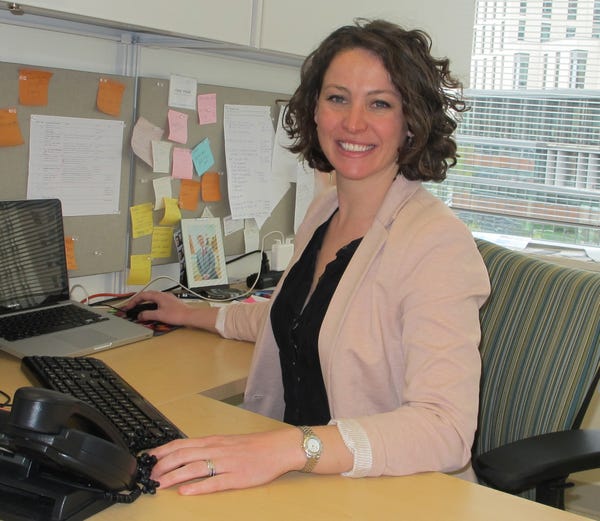3-D Bioprinting and the Future of Regenerative Medicine
September 18, 2015
A professor at Drexel University is working to use 3-D printing to design scaffolding to harness the body's inflammatory response to promote healing.
Kristopher Sturgis

Kara Spiller, an assistant professor, school of biomedical engineering at Drexel University is looking into the use of 3-D printing to study how human bones heal after breaking. Printing out bone precursors, she is helping shed led on how bone and other tissues heal, and she is working to discover the precise amount of inflammation that is needed to optimize healing.
"Inflammation is critical for the repair of all tissues," she says. "If you inhibit inflammation, you inhibit healing. On the other hand, too much inflammation can lead to serious problems and impair healing."
Her group is working to understand which aspects of the inflammation process are responsible for promoting healing, and which aspects slow it. "Once we know that, we can design strategies to promote just those beneficial aspects while minimizing the detrimental parts in order to maximize tissue regeneration using the body's own natural healing mechanisms," Spiller says.
(Note, she'll be speaking on the subject at the upcoming MD&M Philadelphia event, held on October 7-8, 2015.)
In the following Q&A, Spiller further examines the role of inflammation and touches on her work to design 3-D printed tissue scaffolds.
Qmed: Part of your research has involved exploring inflammation and how it can help you predict the healing of diabetic ulcers. Is this because you were able to use inflammation as a biomarker that helps you predict healing behavior?
Spiller: Exactly. Once we understood that cells of the inflammatory response must progress through a particular sequence of behavior states in order for healing to occur, we could track that sequence as a biomarker. Because inflammation is important in the healing of all wounds, we're now exploring the application of this idea to other types of wounds.
Qmed: How did this information lead to the design of specific scaffolding that promotes healing behavior based on the body's inflammatory cells?
Spiller: We're taking two approaches to design scaffolding to harness the body's inflammatory response to promote healing. First, we're investigating materials that are known to be successful in causing healing in patients to try to understand how they affect inflammatory cells, which would allow us to further enhance the healing behavior of those scaffolds or to apply those principles to design of scaffolds for other applications. In the second approach, we're chemically modifying the scaffolds to force the inflammatory cells to exhibit specific sets of behavior, such as those that would promote blood vessel growth.
Qmed: Do you think that identifying similar biomarkers to help predict healing behavior will be an increasing area of interest in the future of wound healing and regenerative medicine?
Spiller: Absolutely. We're starting to learn that every patient has a different immune system, and that affects their response to treatment. Differences in patients' immune systems probably explain why some patients respond to certain treatments while others do not. We hope that by measuring biomarkers related to inflammation, we can develop a personalized medicine approach to tailor a patient's treatment to their specific needs.
Qmed: The conference seminar agenda touched on the idea of wound healing through the development of "smart" biomaterials. Can you tell us a little about some of these "smart" biomaterials, and how they might play a role in the future of wound healing and/or tissue regeneration?
Spiller: It's still very early, but we're working on developing wound dressings that usher the cells of the wound through the necessary phases of inflammation in response to signals released from the wound itself, so that each phase occurs when the wound is ready for it.
Qmed: Are there any specific "smart" biomaterials that you think could have a transformative impact in the realm of medical device technologies, and how do you think we could see these materials manifested into useable technologies?
Spiller: Many researchers are working on regenerative medicine strategies that use the body's own cells to promote tissue repair, ensuring that the strategy is automatically tailored to the specific patient's needs. These technologies are largely under investigation in academic laboratories, so translating these ideas into useable technologies will take close collaboration between companies and academic researchers.
Learn more about cutting-edge medical devices at MD&M Philadelphia, October 7-8. |
Like what you're reading? Subscribe to our daily e-newsletter.
About the Author(s)
You May Also Like


.png?width=300&auto=webp&quality=80&disable=upscale)